On the road with the gamekeeper
Curdin Florineth
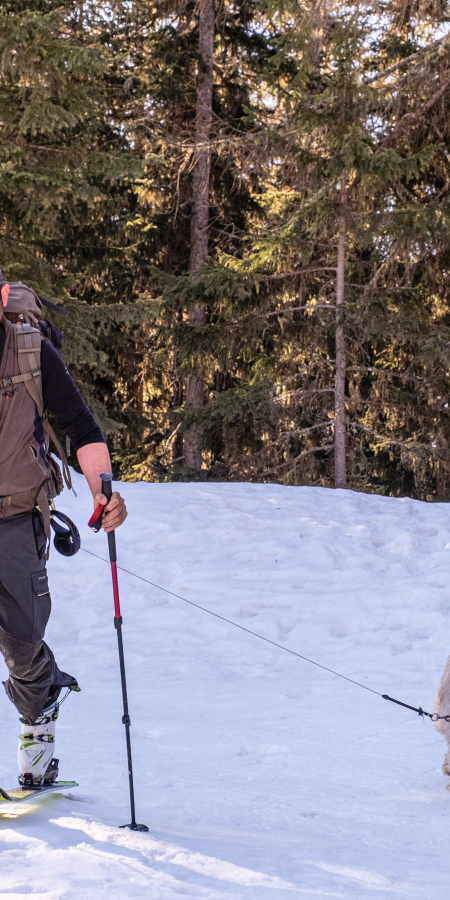
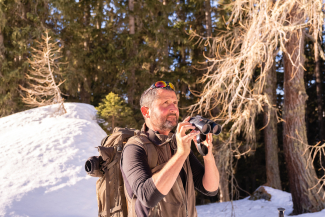
Ftan. A sunny late winter day in the early morning. Tits are chirping merrily in the forest and the hammering of a woodpecker can also be heard. The snow is frozen hard and scrapes under the touring skis of gamekeeper Curdin Florineth, who is out with his dog Aica.
Know where the wildlife rest areas are
Besides the close observation of nature, a permanent task for the gamekeeper, the control of the game resting zone "Aual Grond" is on the program. Are the fences and signs clearly visible? The Easter business is coming up and there will be a lot of people in the skiing area.
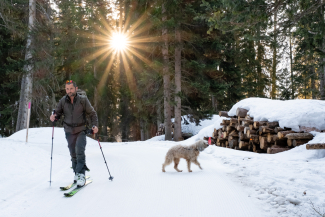
The steep south-facing slopes above the wild rest zone are very popular with freeriders and ski tourers (Piz Clünas) and the conditions are ideal for gliding over the softened spring snow. "That's why it's important that winter sports enthusiasts know where the wild rest zone begins and don't ski it," says Curdin.
In winter, wild animals live in economy mode. That is why their disturbance is devastating.
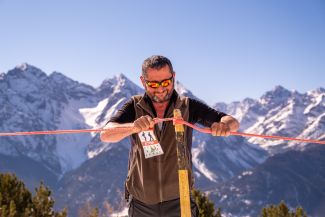
Why are wildlife rest areas so essential for game? "Animals need retreats in winter where they are undisturbed," explains the gamekeeper. "In particular, large wild animals such as deer, roe deer, chamois and ibex only survive the winter because they reduce their bodily functions by up to 60%. They live in economy mode and move as little as possible. This is also the case with grouse species such as black grouse and ptarmigan. It's the survival strategy of our native wildlife."
An escape consumes energy reserves
And what happens when an animal is startled by a human? "An energy-sapping escape in this condition and in deep snow is devastating. The great loss of energy can lead to insufficient reserves and the animal dying," the expert said. "The loss of energy can also not be recovered. This is because the winter feed, scrawny branches and dry grass, contains little nutritional value and serves only to maintain intestinal function."
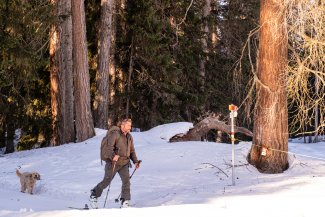
While Curdin walks through the forest, he always keeps his dog on a leash. This is an important rule in addition to respecting wildlife rest zones, the gamekeeper emphasizes. After all, wild animals flee from free-roaming dogs.
Leash dog
After a while, the forest clears and a wide couloir opens up. Curdin grabs the binoculars and searches the slopes. He doesn't see any animals, but he does see some ski tracks running towards him. Downhill skiing is allowed on the open slopes, a corridor for winter sports enthusiasts between two wildlife rest zones.
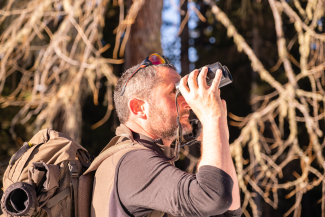
Informing instead of handing out buses
Curdin says, "When you're out in the open, you should always know where you are, not only for wildlife, but also for your own protection." Apps with location and tour planning functions can be very helpful (for example, White Risk from the Swiss Institute for Snow and Avalanche Research SLF).
Watch out for animal tracks in fresh powder snow.
The longtime game warden is sympathetic to athletes and people who like to get out into the wild and wild nature. "It's good for the well-being and everyone and anyone has the right to do it." But it's important to him that people respect rules and are aware of the consequences their actions can have. "For example, if fresh snow has fallen, that means stress for game. If I then see animal tracks in the fresh powder snow, the alarm bells should ring. So I can also sometimes do without a downhill run or tour."
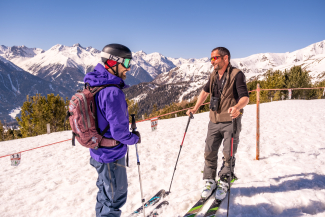
On such tricky days, it's not uncommon for game wardens to be out in the backcountry talking to freeriders and ski tourers. "We usually do this at the top of the mountain and don't wait at the bottom and hand out buses. Because a fine does the startled animal absolutely no good."
Gamekeepers are important mediators
Curdin is aware of how important tourism is for the region and wants to help make nature conservation and winter sports compatible. In addition, there are other interest groups such as forestry and agriculture or hunters. As a game warden, he sees himself not only as an advocate for wildlife, but also as a mediator between the various interests. Mutual exchange is central and an important part of his job, he says. He says, "You can only find good solutions if you understand and respect each other's points of view."
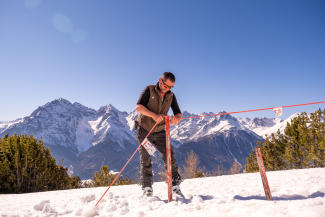
Curdin has been the chief game warden of the Suot Tasna-Ramosch district for over twelve years. According to his experience, the winter sports enthusiasts' awareness of nature has increased. Especially in the Lower Engadine, where the focus is on nature-based and sustainable tourism. And thanks to targeted information.
People's awareness of nature people has increased.
On the other hand, leisure activities are increasing more and more, around the clock. "The first ones set off at 5 a.m. with their headlamps, and the last ones return late after midnight. As a result, nature has hardly any rest periods," the expert points out.
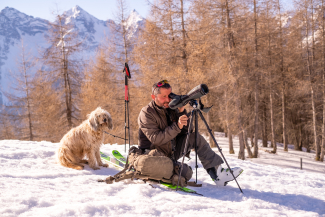
An ibex and a few chamois
Curdin and Aica have reached the tree line. On the other side of the valley, the sun is beating down on the mountain peaks, but Curdin is more interested in the trail of a snowshoe hiker. "It goes right through the middle of the game rest zone. It's annoying because it's highly visible and can find imitators." Then he sets up his spotting scope and scans the slopes for wildlife. On the far ridge toward Val Tasna, Curdin spots an ibex, and he also counts a few chamois with his trained eye.
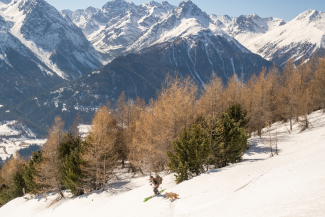
"I like to go ski touring myself".
Curdin Florineth grew up in Ftan and lives in the house of his ancestors, a time-honored Engadine house. He has been interested in the processes of nature from an early age. His father took him hunting, and an uncle was a gamekeeper. He learned to be a carpenter, like his father and brother. But at the age of 23, he became a park ranger in the Swiss National Park. In 2005, he left the strictly protected national park and switched to game wardening, for him the more varied job because he has to deal with many stakeholders. Since 2010, Curdin has presided over the Val Tasna-Ramosch district. The 51-year-old is married and father of a daughter and a son. In his free time, he likes to go on a ski tour himself, and in the summer he is an amateur beekeeper. One animal that particularly fascinates him is the snow hare. "These are such delicate animals that often live at the very top of mountain peaks in winter. It's incredible how they keep it up."
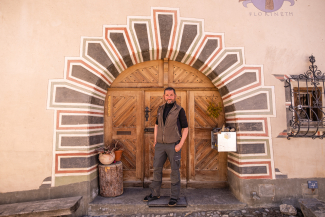
Text: Franco Furger
Pictures: Claudio Daguati


